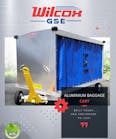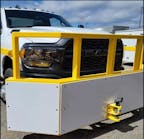When it comes to ground support, training is of the utmost importance. Properly trained employees work efficiently, confidently and, above all, safely.
However, there are multiple ways to address training. The reason for this is due in large part to the various ways people learn.
For instance, some people are visual learners. They may benefit more from a presentation with graphs and charts, or handouts with instructions spelled out in a plain, easy-to-read way. Others, excel with aural teaching. Simply put, they can listen to verbal lessons and retain the information. What’s more, tactile learners can absorb information by doing a specific task. A hands-on approach allows lessons to sink in more effectively.
Numerous scientific minds have studied the ways our brains take in knowledge, and there is far too much information on the subject to print in this column. But the fact remains, people learn in different fashions.
So when it comes to training, it is important to have multiple teaching methods built into a training program. A completely visual program, for example, may be extremely helpful for some but inadequate for others.
Take a critical look at the way new hires are trained at your location. Remember, just because a training method is clear to you, doesn’t mean it is intuitive for others.
Consider diversifying the way information is delivered. Have a colleague review the training process to get an additional point of view, or solicit feedback from employees who have already gone through the training process.
You may find that some employees think the training is excellent while others feel lost. Discovering any potential disconnects between trainers and trainees can allow an organization to address issues before they become safety risks.






